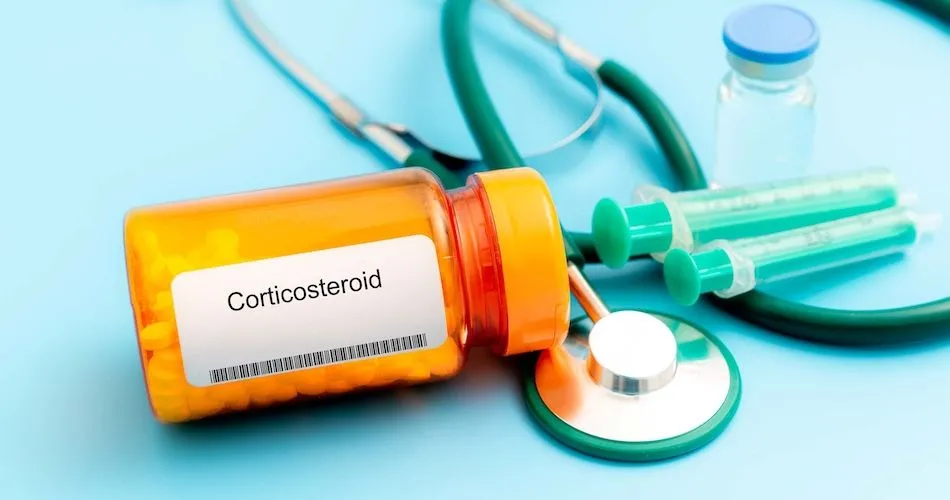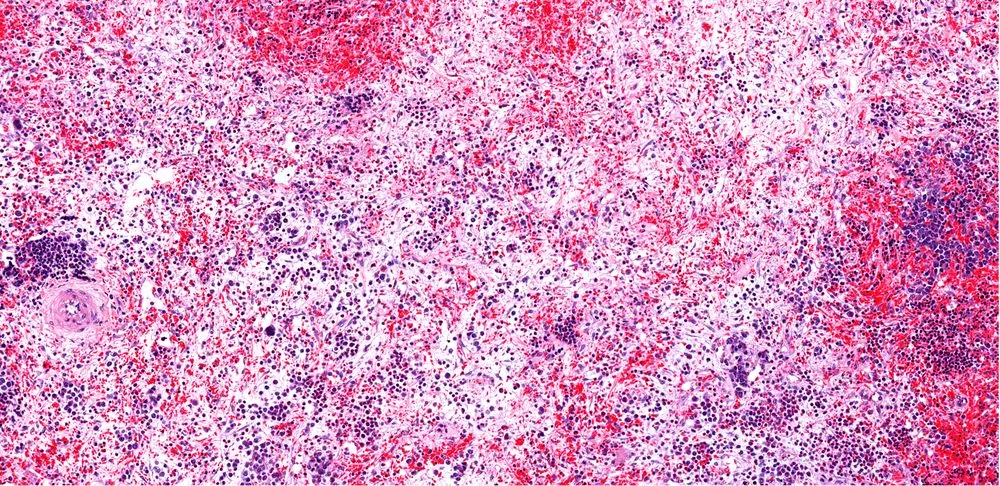Expert Discussion of MDS Risk Assessment

Myelodysplastic syndromes (MDS) are a group of diverse bone marrow disorders in which the bone marrow does not produce enough healthy blood cells. Staging and classifying MDS is crucial in determining the severity of the disease and planning the appropriate treatment strategy.
In a peer discussion hosted by OncLive, doctors Yasmin Abaza MD, Ehad L. Atallah MD, Andrew Brunner MD, and Amy DeZern MD shared important insights on risk assessment and patient communication in MDS.
Expert Panel:
- Yasmin Abaza, MD, Robert H Lurie Comprehensive Cancer Center, Northwestern University of Chicago
- Ehad L. Atallah, MD, Froedtert & the Medical College of Wisconsin Cancer Network
- Andrew Brunner, MD, Mass General Cancer Center Boston
- Amy DeZern, MD, Sydney Kimmel Comprehensive Cancer Center
How Is MDS Risk Evaluated?
MDS risk levels are typically divided into low risk, intermediate risk and high risk. A patient’s MDS risk level often predicts prognosis and how well someone may respond to treatment. The Revised International Prognostic Scoring System (IPSS-R) is universally used for determining risk level,, and helping with clinical trial design. It also helps determine which patients can receive which drugs.
The IPSS-R evaluates a patient’s hemoglobin levels, blast percentage in the bone marrow, platelet count, cytogenetics, and absolute neutrophil count.
What Do MDS Experts Say About the Risk Scoring System?
Dr. Amy DeZern provided meaningful insights into what MDS scoring systems are used in clinical practice and a future vision toward personalized medicine.
She says that although IPSS-R is commonly used, it would be more beneficial to start incorporating the IPSS-M, which evaluates molecular aspects of MDS disease. Doing this can help assess gaps in understanding, especially for intermediate-risk MDS patients. There is not yet a prognostic score that fits perfectly for every patient. That’s why gathering as much information from patients as possible is important to assess their MDS and to provide the best treatment options available for each individual patient.
How Do Experts Manage Low-Risk MDS?
It’s important to understand the characteristics of low-risk MDS patients. These patients typically present with low blood cell numbers and relatively good-risk cytogenetics, which means they are less likely to progress to AML. Doctors agree that low-risk MDS patients have longer survival rates.
The primary therapeutic goals are improving blood cell production and reducing iron overload.
For low-risk MDs by IPSS-R, she mentions that it’s tricky because not all low-risk patients have low-risk mutations. It’s important to know their molecular profile. Still, there is no real change regarding how to tailor a treatment plan for low-risk categories with high-risk molecular analysis. Hopefully, this will change in the future.
What Do Experts Highlight on High-Risk MDS?
High-risk MDS is characterized by lower survival rates, complex cytogenetics and an increased risk of evolving to acute myeloid leukemia. Dr. DeZern mentions that ablast percentage 5% or greater can be considered high-risk in MDS
One of the main goals for high-risk MDS patients is delaying transformation to AML and extending survival. Dr. Atallah mentioned that during his practice over the years, he has seen an increasing number of high-risk MDS patients. He shared that this could be due to a history of underreporting lower-risk MDS. He emphasized that the incidence of high- vs low-risk patients is evolving alongside developing and using prognostic scores.
Dr. Abaza mentions how she discusses risk assessment and prognosis with her patients. Although this is a tough question to answer, IPSS-R high-risk MDS are usually elderly patients who are also not transplant eligible with a survival rate of 6 months to a couple of years. She mentions that this may change with improved treatment options.
What’s the Future for MDS Risk Assessment?
In the era of personalized medicine, efforts are focused on assessing the MDS risk status with complete prognostic scores such as the molecular IPSS to personalize treatments that extend all patients’ overall survival and quality of life.
Dr. DeZern’s approach utilizes clinical data to guide therapeutic decisions and balance scoring system insights with individual patient profiles.
Continuous improvement of prognostic tools and integration of molecular data into risk determination will contribute to a more accurate evaluation of a newly diagnosed MDS patient. And more patient data will help create enhanced treatment tailoring for both low- and high-risk MDS patients.
Compiling information on patients with individual characteristics will help researchers and doctors develop personalized treatment options to manage MDS across all risk categories.
Being your best self-advocate can involve effective communication with your MDS specialist, tracking your MDS, and participating in the decision-making process of your treatment.
By securely connecting your electronic health records, HealthTree Cure Hub allows you to use the clinical trial finder, find a specialist, keep track of your disease, and so much more! Sign up for a free patient account today to get started. You can, too, contribute to research!
Sources:
- Risk Stratification of Myelodysplastic Syndromes
- Risk stratifying MDS in the time of precision medicine
- Risk Stratification of Myelodysplastic Syndromes
Myelodysplastic syndromes (MDS) are a group of diverse bone marrow disorders in which the bone marrow does not produce enough healthy blood cells. Staging and classifying MDS is crucial in determining the severity of the disease and planning the appropriate treatment strategy.
In a peer discussion hosted by OncLive, doctors Yasmin Abaza MD, Ehad L. Atallah MD, Andrew Brunner MD, and Amy DeZern MD shared important insights on risk assessment and patient communication in MDS.
Expert Panel:
- Yasmin Abaza, MD, Robert H Lurie Comprehensive Cancer Center, Northwestern University of Chicago
- Ehad L. Atallah, MD, Froedtert & the Medical College of Wisconsin Cancer Network
- Andrew Brunner, MD, Mass General Cancer Center Boston
- Amy DeZern, MD, Sydney Kimmel Comprehensive Cancer Center
How Is MDS Risk Evaluated?
MDS risk levels are typically divided into low risk, intermediate risk and high risk. A patient’s MDS risk level often predicts prognosis and how well someone may respond to treatment. The Revised International Prognostic Scoring System (IPSS-R) is universally used for determining risk level,, and helping with clinical trial design. It also helps determine which patients can receive which drugs.
The IPSS-R evaluates a patient’s hemoglobin levels, blast percentage in the bone marrow, platelet count, cytogenetics, and absolute neutrophil count.
What Do MDS Experts Say About the Risk Scoring System?
Dr. Amy DeZern provided meaningful insights into what MDS scoring systems are used in clinical practice and a future vision toward personalized medicine.
She says that although IPSS-R is commonly used, it would be more beneficial to start incorporating the IPSS-M, which evaluates molecular aspects of MDS disease. Doing this can help assess gaps in understanding, especially for intermediate-risk MDS patients. There is not yet a prognostic score that fits perfectly for every patient. That’s why gathering as much information from patients as possible is important to assess their MDS and to provide the best treatment options available for each individual patient.
How Do Experts Manage Low-Risk MDS?
It’s important to understand the characteristics of low-risk MDS patients. These patients typically present with low blood cell numbers and relatively good-risk cytogenetics, which means they are less likely to progress to AML. Doctors agree that low-risk MDS patients have longer survival rates.
The primary therapeutic goals are improving blood cell production and reducing iron overload.
For low-risk MDs by IPSS-R, she mentions that it’s tricky because not all low-risk patients have low-risk mutations. It’s important to know their molecular profile. Still, there is no real change regarding how to tailor a treatment plan for low-risk categories with high-risk molecular analysis. Hopefully, this will change in the future.
What Do Experts Highlight on High-Risk MDS?
High-risk MDS is characterized by lower survival rates, complex cytogenetics and an increased risk of evolving to acute myeloid leukemia. Dr. DeZern mentions that ablast percentage 5% or greater can be considered high-risk in MDS
One of the main goals for high-risk MDS patients is delaying transformation to AML and extending survival. Dr. Atallah mentioned that during his practice over the years, he has seen an increasing number of high-risk MDS patients. He shared that this could be due to a history of underreporting lower-risk MDS. He emphasized that the incidence of high- vs low-risk patients is evolving alongside developing and using prognostic scores.
Dr. Abaza mentions how she discusses risk assessment and prognosis with her patients. Although this is a tough question to answer, IPSS-R high-risk MDS are usually elderly patients who are also not transplant eligible with a survival rate of 6 months to a couple of years. She mentions that this may change with improved treatment options.
What’s the Future for MDS Risk Assessment?
In the era of personalized medicine, efforts are focused on assessing the MDS risk status with complete prognostic scores such as the molecular IPSS to personalize treatments that extend all patients’ overall survival and quality of life.
Dr. DeZern’s approach utilizes clinical data to guide therapeutic decisions and balance scoring system insights with individual patient profiles.
Continuous improvement of prognostic tools and integration of molecular data into risk determination will contribute to a more accurate evaluation of a newly diagnosed MDS patient. And more patient data will help create enhanced treatment tailoring for both low- and high-risk MDS patients.
Compiling information on patients with individual characteristics will help researchers and doctors develop personalized treatment options to manage MDS across all risk categories.
Being your best self-advocate can involve effective communication with your MDS specialist, tracking your MDS, and participating in the decision-making process of your treatment.
By securely connecting your electronic health records, HealthTree Cure Hub allows you to use the clinical trial finder, find a specialist, keep track of your disease, and so much more! Sign up for a free patient account today to get started. You can, too, contribute to research!
Sources:
- Risk Stratification of Myelodysplastic Syndromes
- Risk stratifying MDS in the time of precision medicine
- Risk Stratification of Myelodysplastic Syndromes

about the author
Jimena Vicencio
Jimena is an International Medical Graduate and a member of the HealthTree Writing team. She has a passion for languages and is currently learning Japanese. In her free time, she loves playing with her cats. Jimena is also pursuing a bachelor's degree in journalism.
More on Core Education
Trending Articles
Get the Latest Myelodysplastic Syndromes Updates, Delivered to You.
By subscribing to the HealthTree newsletter, you'll receive the latest research, treatment updates, and expert insights to help you navigate your health.
Together we care.
Together we cure.
3x Faster.









